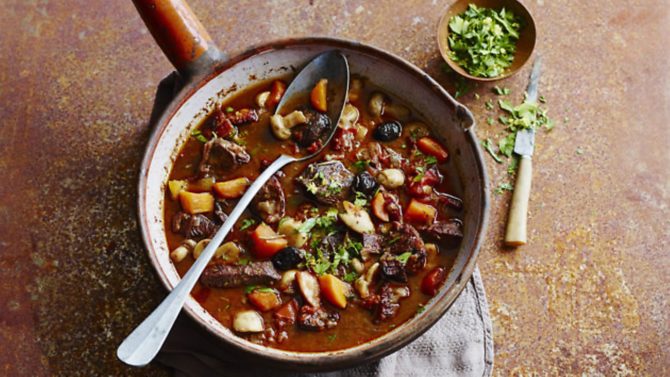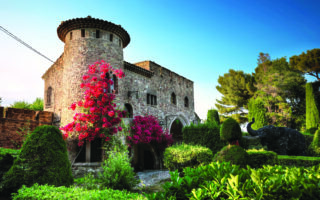Recipe: Daube de boeuf Provençale

Food writer Louise Pickford shares her recipe for the Provence dish daube de boeuf and explores the history behind this warming beef stew
Essentially a beef stew, a daube (thought to have originated from the Italian addobbo and from there to Mexican adobo) meaning seasoning, refers to the herbs and orange zest typically used to flavor the Provençal version. Traditionally, a daube would have been cooked in a vessel known as a daubière. This earthenware pot is shaped more like a pitcher with a concave lid in which water would sit. Because cheap cuts of meat were used, they required long, slow braising; the water in the lid would help condense the moisture below, so the dish remained moist in the long cooking process, resulting in meltingly tender meat.
Although this version is attributed to the Provence-Alpes-Côte d’Azur region, this type of stew is cooked all over France and has long been a staple in households throughout the country. Recipes differ accordingly, and although beef is traditionally associated with the south, other meats such as lamb are also cooked using a similar method, with just the seasonings changing, depending on what is to hand or in season. Other ingredients include variations on vegetables, meat, and herbs. The meat, taken from cuts from the shoulder and back, can be cooked as a whole piece, or diced if you prefer. Most modern recipes include red wine, but earliest recipes called for white wine.
Classically served in Provence with flat macaroni-like pasta (macaronade), the slow-cooked meat would have been served separately and the sauce reduced and thickened and stirred through the pasta. Another characteristic is the fact that it is cooked over two days and served reheated. This is often considered the best way to serve the stew, which is accompanied by a persillade of finely chopped parsley, garlic, anchovies and lemon zest.
I have adapted this recipe over several years, trying to make it as authentic as possible while ensuring its practicality for today’s cooks. I use silverside or chuck steak as it’s known in the UK, or in France, ‘collier’. It seems to give the best flavour while staying moist and tender. Make sure to use a good, heavy-bodied red wine such as a Côtes du Rhône. I tend to cook it in two stages in one day, adding the mushrooms and olives after three hours, but if you prefer, you can leave it overnight at this stage, and add the mushrooms and olives the next day, reheating slowly and cooking it for a final 30 minutes.
You can serve the stew with pasta as tradition demands, or if you are like me, I love nothing better than good old mashed potato.
LOUISE’S RECIPE (serves 6)
INGREDIENTS
• 1kg beef silverside, chuck steak or collier
• 4 tbsp olive oil
• 150g lardons, diced
• 2 onions, chopped
• 2 carrots, chopped
• 2 garlic cloves, chopped
• 2 sprigs fresh thyme
• 1 sprig fresh rosemary
• 2 strips orange zest
• 600ml red wine
• 4 ripe tomatoes, roughly chopped
• 250g button mushrooms
• 12 black olives
• 4 tbsp chopped fresh parsley
• grated zest 1 lemon
• mashed potato or pasta, to serve
METHOD
1. Pre-heat the oven to 150°C/130°C fan/Gas 1. Cut the beef into 2.5 cm cubes and season with salt and pepper. Heat half the oil in a flame-proof casserole dish and fry the lardons for 5 minutes until golden, remove with a slotted spoon. Add the beef to the pan, in two batches, and fry over a high heat for 5-6 minutes until browned on all sides. Remove with a slotted spoon.
2. Add the remaining oil to the pan and fry the onions, carrots, garlic and herbs with a little salt and pepper for 10 minutes until softened. Return the meat to the pan with the orange zest, wine and tomatoes.
3. Bring to the boil, cover and bake for 3 hours.
4. Stir in the mushrooms and olives, return to the oven and cook for a further 30 minutes until the meat is tender and the sauce is thick. Combine the parsley and lemon zest and serve alongside the beef with the mashed potato or pasta.
Other classic French dishes include Cassoulet, mousse au chocolat and crêpes Suzette
Share to: Facebook Twitter LinkedIn Email


